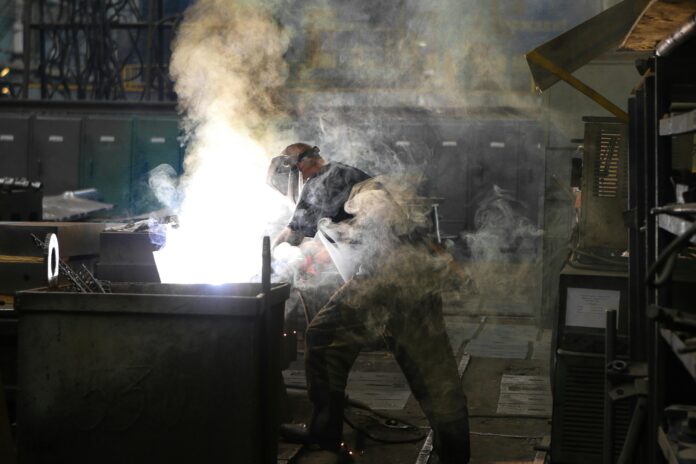Innovations in technology have brought about a significant revolution in the industrial sector, which has been witnessed by the industry.
There have been numerous gadgets that have been instrumental in improving the efficiency, precision, and safety of the industrial operations being carried out.
This article will take a closer look at seven of these gadgets that have made important contributions to the development of the manufacturing industry.
1. Industrial Robots
Automation of repetitive activities with precision and speed has been made possible by industrial robots, which have transformed the manufacturing industry.
Because they are outfitted with sophisticated sensors and algorithms, these robots are able to carry out complex tasks with only a small amount of assistance from humans.
In manufacturing operations, industrial robots have helped to streamline processes, enhance efficiency, and assure consistent quality. These benefits have been realized across a variety of areas, including assembly lines, welding, and packing.
2. 3D Printers
Prototyping and production in the manufacturing business have been substantially altered as a result of the introduction of 3D printing technology.
Intricate and individualized things can be created with an accuracy that is unmatched by 3D printers through the process of layering materials based on digital blueprints.
The traditional techniques of production have been revolutionized as a result of this technology, which has cut lead times, minimized material waste, and promoted fast iteration in product development cycles.
3. Telescopic Activator
The telescopic activator is yet another gadget that has made major contributions to the improvement of the manufacturing industrial sector.
When it comes to lifting, placing, and tilting, this multipurpose mechanism, which is able to extend and retract with pinpoint accuracy, is utilized in a variety of procedures.
Buying high-quality telescopic actuators can improve efficiency and flexibility in manufacturing operations by allowing precise control over movement, whether in car assembly lines or industrial gear.
4. CNC Machines
Precision machining in the manufacturing industry has been reimagined due to the introduction of computer numerical control (CNC) machines.
These computerized controls are utilized by these automated machines in order to carry out the instructions that have been pre-programmed. As a result, the manufacture of complex components is rendered extremely accurate and constant.
Since CNC machines are capable of working with a diverse assortment of materials, ranging from metals to plastics, they have become an integral component of contemporary manufacturing facilities.
5. IoT-enabled Sensor
The advent of the era of smart manufacturing can be attributed to the collaboration between sensors and Internet of Things (IoT) technologies.
The Internet of Things (IoT) enables sensors to collect data in real-time on a variety of characteristics, including temperature, humidity, and pressure, which supplies vital insights into the production processes.
The utilization of these sensors in industrial facilities helps to improve operating efficiency and reduce downtime by monitoring the health of the equipment, optimizing energy usage, and predicting the need for maintenance.
6. Augmented Reality (AR) Devices
Augmented reality (AR) devices have evolved as power tools that can be utilized in production environments for the purposes of training, maintenance, and quality assurance programs.
The use of augmented reality (AR) devices enables workers to visualize instructions, troubleshoot machinery, and do difficult jobs with precision. This is accomplished by superimposing digital information onto the physical world.
Through the enhancement of productivity, the reduction of errors, and the acceleration of skill development, this technology makes it possible to drive innovation in industrial procedures.
7. Collaborative Robots (Cobots)
The human-robot interaction in production environments has been completely transformed by collaborative robots, often known as cobots. On the production floor, cobots are designed to operate alongside humans, thereby improving both safety and efficiency.
This is in contrast to standard industrial robots. While these robots are able to execute jobs that demand dexterity and flexibility, such as precise assembly and delicate handling, they are also able to ensure the safety of workers by utilizing sophisticated sensors and intelligence algorithms.
Conclusion
The adoption of cutting-edge equipment and technical advancements are driving the manufacturing industry’s continued rapid evolution.
Technologies such as industrial robots, 3D printers, IoT-enabled sensors, and augmented reality gadgets are revolutionizing conventional production procedures, enhancing productivity, and promoting long-term expansion.
The importance of new gadgets in fostering agility and competitiveness will only increase as firms embrace the fourth industrial revolution.

